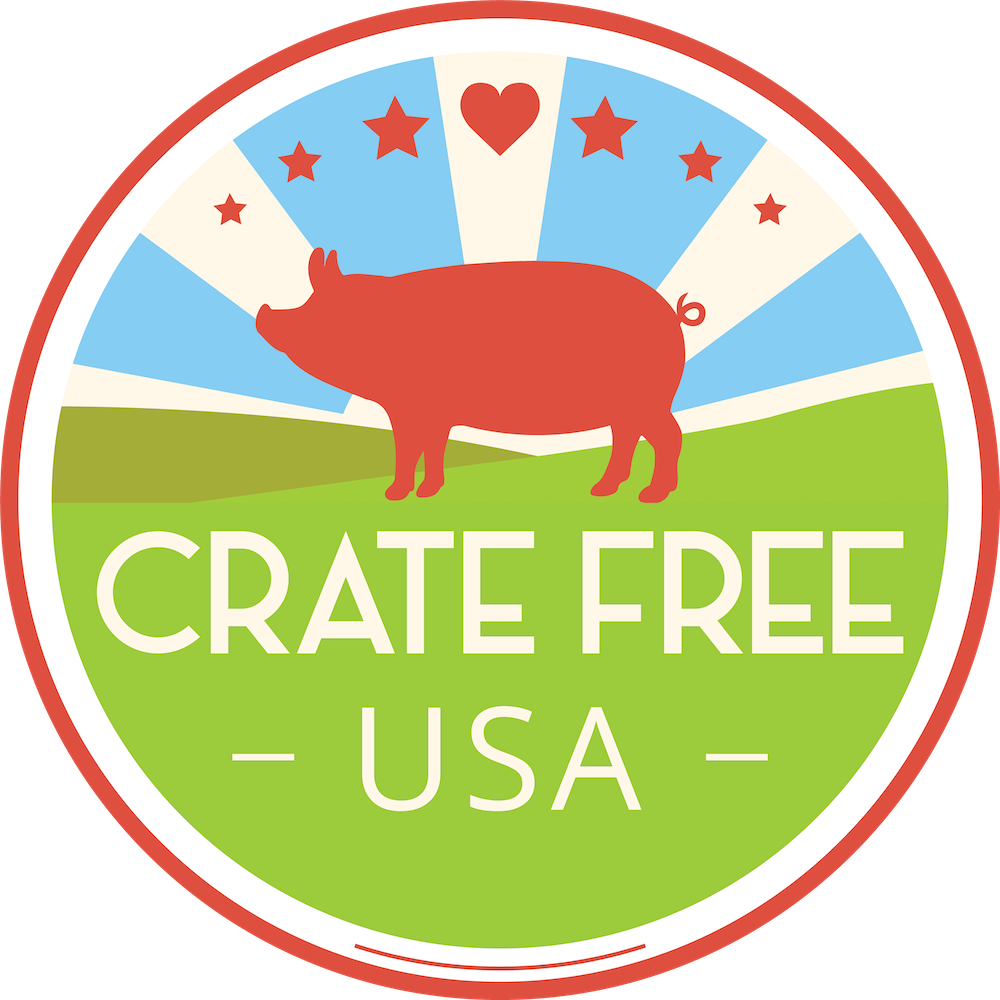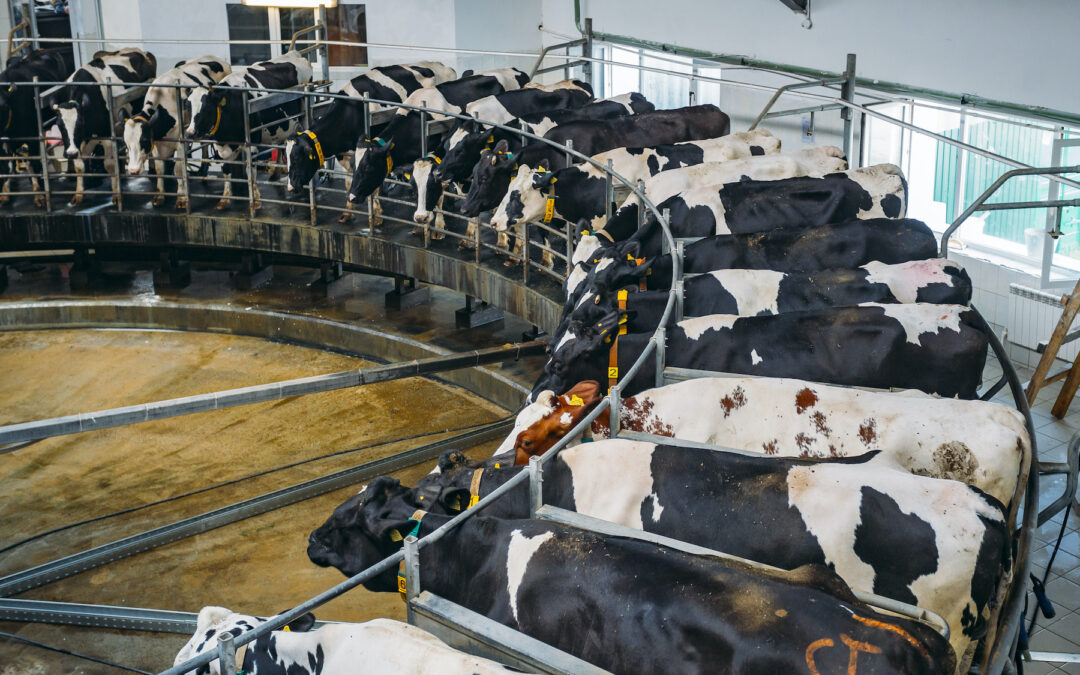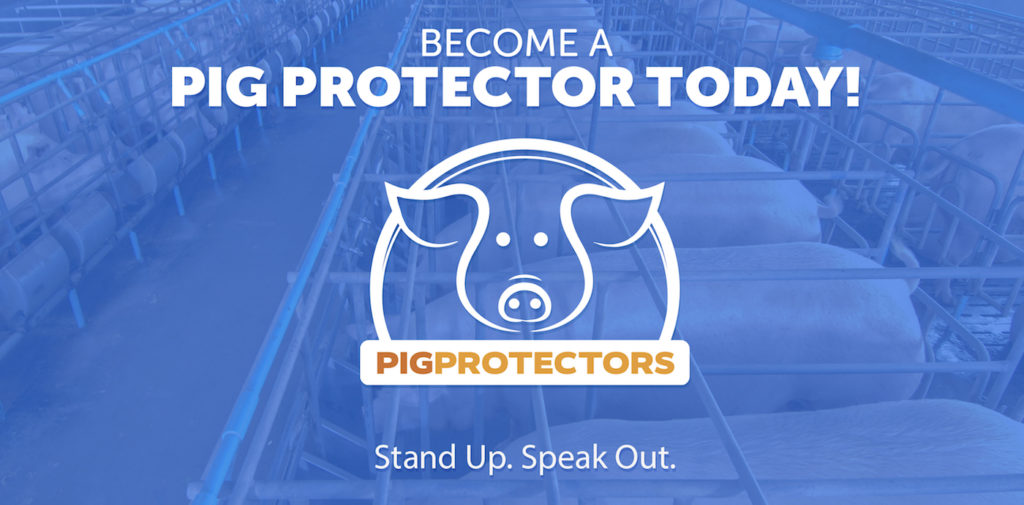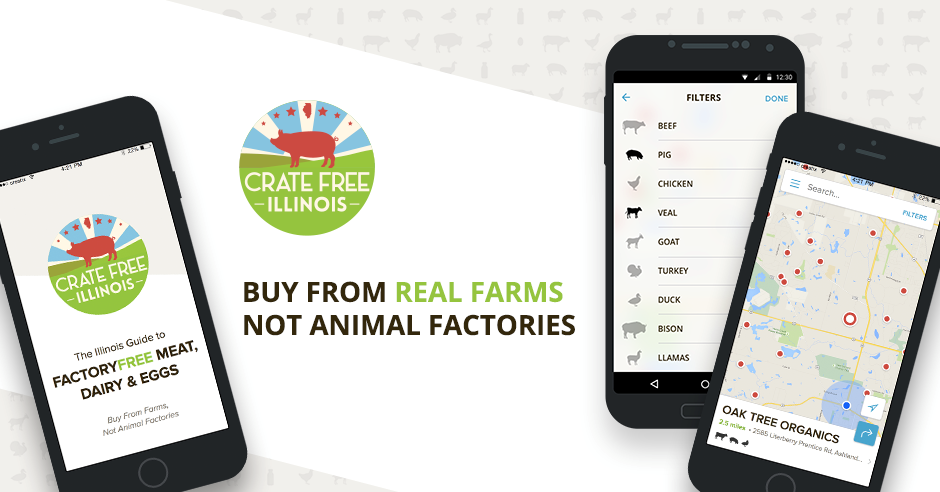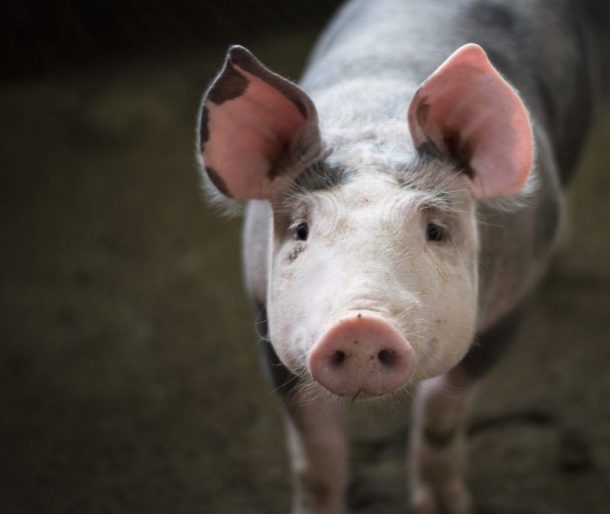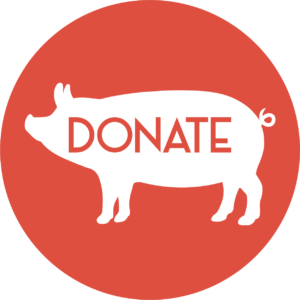What Are Factory Farms?
Factory farms, or concentrated animal feeding operations (CAFOs), are an industrialized system of raising animals for consumption. The focus is on the maximum output of their product — animals or animal products.
The animals on these so-called “farms” are often confined in cages or crates and can be genetically modified to speed up growth. A genetically modified organism (GMO) is an animal, plant, or microbe whose DNA has been altered using genetic engineering techniques.
When did factory farming start? Factory farming dates back to the 1920s when farmers realized they could keep hens confined in small coops to maximize their space for egg production. The practice only got worse during the food shortages happening throughout World War II.
What are some facts about factory farming? Factory farming is an inhumane practice. We’ve put together a quick list of 10 startling facts to prove it. Let’s get started:
1. Factory Farming and the Environment Don’t Get Along
Industrial agriculture surpasses the transportation sector when it comes to greenhouse gas emissions. If the smell wasn’t bad enough, the air is actually being polluted with methane, ammonia, and hydrogen sulfide as manure decomposes.
Water pollution is another result of manure mismanagement, as nitrogen and phosphorus leach into waterways and cause algae blooms. These blooms kill the native aquatic life and destroy ecosystems.
The clean water that is available is often taken from local water sources, depleting the supply for neighboring towns.
2. Dairy Farms Take Newborn Calves Away From Their Mother Just One Hour After Birth
Cows that live on dairy farms are subjected to artificial insemination in order to get them to produce milk. Once they give birth to their calf, it is ripped away so that all the milk can be sold for human consumption. Female cows will be allowed to live, so that the cycle can continue, but the male cows will be sold and slaughtered for veal at 16-18 weeks old.
How long do factory farm animals live? A cow on a factory farm is slaughtered between 1-2 years old. A dairy cow gets a little bit of a longer life span, being slaughtered after she no longer can produce milk, around 4-6 years old. This is still significantly longer than the 5-6 months of a pig, and 8-12 weeks that a chicken raised for meat is given to live on an industrial farm.
3. Pigs Are Confined To Gestation Crates With No Ability To Move Naturally
 In the U.S., pig farms are notorious for their poor treatment of these intelligent animals. Mother pigs are repeatedly impregnated and confined in gestation crates, which are so small that these social animals can’t even turn around or stretch their legs. According to Statista.com, in 2021 alone, 129 million pigs were slaughtered for meat, after a lifetime of confinement and suffering.
In the U.S., pig farms are notorious for their poor treatment of these intelligent animals. Mother pigs are repeatedly impregnated and confined in gestation crates, which are so small that these social animals can’t even turn around or stretch their legs. According to Statista.com, in 2021 alone, 129 million pigs were slaughtered for meat, after a lifetime of confinement and suffering.
What happens to animals on factory farms? Animals are not allowed to live and exhibit their natural behaviors on factory farms. Their movement is restricted, their lives are cut short, and they often live in filthy environments, amongst other sick or even dead animals.
4. Chickens Are Not Covered By the United States Slaughter Act
The Humane Methods of Slaughter Act is one of the few animal protection laws in the U.S. It states that livestock animals in the U.S. must be unconscious or unable to feel pain when being slaughtered. It includes pigs, cows, horses, and sheep, but no mention of chicken or other poultry animals. The U.S. slaughters 9 billion chickens each year for food, and not a single one of these billions of animals is granted a pain-free death.
The factory farming practice to slaughter chickens tends to be a live-shackle slaughter. This means the chickens that come from factory farms are bound and forced into electrified water before having their throats slit either by a machine or an employee.
5. Farmed Fish Are Overlooked Victims
When people think of animals in factory farms, fish are often forgotten about. In fact, about half the fish consumed in the world are farm-raised these days. These aquatic animals face similar abuse and inhumane conditions as land animals. They are forced to live in crowded water farms with thousands of animals, with the water often being overrun with parasites and bacteria.
As with livestock farming, raising huge numbers of animals in a confined space leads to pollution from feces, dead fish, and uneaten food. In order to produce the maximum amount of meat, fish are genetically modified and full of antibiotics. Animal welfare organizations and environmental activists worry about the effects these aquatic farms can have on local fish populations and water sources.
6. Antibiotics in Animal Farming Have Lead to Drug-Resistant Bacteria
There is widespread and often prophylactic use of antibiotics in the factory farming industry. The crowded and unsanitary conditions in farms and slaughterhouses mean that animals are routinely given antibiotics not to treat infections, but to prevent them from happening. When antibiotics are used regularly. bacteria will begin to survive the treatments.
How does factory farming affect humans? Over time, the bacteria that grows in factory-farmed animals will multiply and spread to other animals, sometimes even to humans. Resistant bacteria can transfer from animals to humans when humans eat contaminated food that isn’t properly cooked, when they jump from sick animals to workers through direct contact, when it is leached into waterways, or when contaminated fertilizer is used on crops for food.
7. Hens Have Their Beaks Cut Off
When chickens used to produce eggs are forced to live in confined areas, they become more aggressive. Hens will peck and attack neighboring hens. Farmers call it “beak-conditioning“, but it is really cutting the beak off the hen. The beak is a sensitive organ with nerves and cutting it is nothing short of animal abuse.
8. Animal Agriculture Drives 90% of Deforestation
Farmed cows need room to grow, but the crops grown to feed factory-farmed animals need even more room. Vast areas of forests, especially in places like the Amazon rainforest, are cleared for growing crops. Trees act as carbon sinks, removing and storing carbon dioxide from the atmosphere. When forests are cut down and burned, the stored carbon is released back into the atmosphere, increasing global warming potential.
90% of deforestation is due to crops growing for animal and human consumption. Deforestation destroys biodiversity and disrupts water cycles. Sustainable farming practices like silvopasture and agroforestry have been making headway to address these issues.
9. Chickens Live in Cages Smaller Than A Sheet of Paper

Animals raised for food, like cows, pigs, and chickens, are all subjected to cruel caging practices. Most confined farm animals live in shockingly small spaces. Chickens are given a crate smaller than a sheet of paper to live in. The cage restricts the ability to move, engage in natural behaviors, and keeps the animal in constant stress and discomfort.
Living in such cramped conditions leads to bone fractures and feather loss. Consumers who do know about the inhumane and unethical caging tend to choose free-range or even better “pasture-raised” alternatives. For egg laying hens, the term cage-free is still very limited. Learn more regarding the often mis-leading, non-official food labels in the U.S.
If you want to find a human local farmer in Illinois to buy cage-free meat, dairy, and eggs check out our mobile app!
10. No Federal Laws Exist to Protect Farmed Animals on the “Farm”
In the United States, federal laws that relate to the treatment of farm animals are surprisingly limited, especially when compared to regulations pertaining to pets or wildlife. Farm animal protection includes:
The Humane Methods of Slaughter Act (HMSA) of 1958: This act requires the humane slaughter of livestock, ensuring that animals are rendered insensible to pain (e.g., through stunning) before being slaughtered. It does not include poultry as previously discussed.
The 28-Hour Law: Originally passed in 1873 and amended in 1994, this law mandates that animals transported across state lines for slaughter cannot be confined in cars, boats, or aircraft for more than 28 consecutive hours without being unloaded for at least five hours for rest, water, and food. Enforcement of this law can be challenging, and there are unfortunate exceptions. For instance, the time can be extended to 36 hours by the owner or shipper’s written request.
Neither of these federal laws does anything to protect the animals while they are being raised at the industrial farm. The Farm System Reform Act is a proposed bill that farm animal advocates like the volunteers here at Crate Free USA are hoping to see move through Congress. New state laws are slowing being introduced, like Prop 12 in California, but they are continuously met with strong opposition and dollars from big ag.
Reasons We Should Stop Factory Farming and Support Local U.S. Farmers
Factory farms are responsible for the mass production of livestock in confined spaces. This practice has dominated the agricultural industry over the past few decades and while it has succeeded in producing large quantities of food at relatively low prices, the true costs are becoming increasingly apparent.
Choosing to support local farmers for your meat, dairy, and eggs means choosing NOT to support the industrial animal agriculture industry. You are supporting a member of the community, and putting your dollars back into the local economy,
Choosing to support a local farmer is choosing to reduce environmental impacts and support biodiversity. And buying from a local, more humane farmer typically means you are choosing to support better welfare while refusing to support the animal abuse that factory farms continue to perpetuate with their extreme confinement and faster breeding methods.
Author Bio:
Sam Damiano is a data and marketing specialist who has held multiple volunteer roles for Crate Free USA since December of 2016. She enjoys volunteering and takes pride in working with a variety of non-profit organizations fighting for a better world for humans and animals. Outside of work and volunteering, she can be found surrounded by dogs, building guitars, or practicing martial arts.
